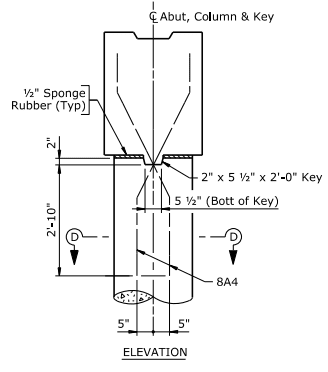Usman Tanveer
Civil/Environmental
Greetings . So, the thing is I want to design a hinge/pin connection between deck and abutment. The tricky part is both of them are concrete sections. There are many guides available for steel connection or even steel-concrete sections but for designing concrete-concrete connections the guide always talk about giving lap lengths or anchorage lengths that is, a fix connection. I read a comment here where someone was talking about analyzing with a hinge connection but giving a fix connection in real life and everyone was endorsing it citing accidental moments. What if I don't want my abutment to experience those moments.
Is there a guide for pin/hinge connection design for two concrete sections in bridges?
Is there a guide for pin/hinge connection design for two concrete sections in bridges?

